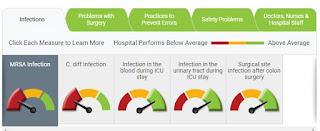By Al Cross
Kentucky Health News
FRANKFORT, Ky. – Kentucky's cigarette tax is going up by 83 percent in July, to $1.10 a pack, but the impact on Kentucky tobacco farmers will be "very, very small." So said the legislature's leading tobacco advocate after Republican legislators overrode Republican Gov. Matt Bevin's vetoes of the omnibus tax bill and the budget it finances.
 |
| Sen. Paul Hornback |
Republican Sen. Paul Hornback of Shelbyville, a longtime tobacco grower, was one of two senators who voted for the surprise tax measure on April 2 but voted against it on Friday, April 13. The other was Sen. Joe Bowen, R-Owensboro.
Hornback, asked afterward why he switched, recalled saying when he voted the first time that it was "a bad revenue bill" that weighed heavily on agriculture, particularly tobacco, "because the largest single tax it creates is the tobacco tax, the cigarette tax."
Challenged on whether the tax would have any impact on Kentucky's 4,000 or so tobacco farmers, Hornback smiled and said, "Well, it sounds good." He added, "It does have some. It's very, very small." Tobacco trades in a world market.
The tax may not have much effect on Kentucky's second-in-the-nation smoking rate, either. Anti-smoking advocates called for a $1-a-pack increase, saying that cigarette companies will keep smokers hooked by offering coupons and discounts when the tax hike hits, then gradually raise their prices.
Hornback said a more significant factor in his vote was that estimates of revenue from the higher tax were based on last year's sales and did not seem to take into account a likely loss in Kentucky sales to residents of states where the tax is or will be lower, such as Indiana. "I don't know what that number is, but it's a big number," he said.
 |
| Original map from Campaign for Tobacco-Free Kids, adapted by Kentucky Health News |
Hornback said he also switched on the bill because it wasn't the comprehensive tax reform the state needs. He said some Republicans pushing for an override argued that the bill was just "one bite of the apple" and the politically touchy subject could be tackled again. He is skeptical.
"I don't think we have the will to go back and re-address this issue of comprehensive tax reform anytime in the foreseeable future," Hornback said. "That's my concern. If we're gonna do it, we should have done it. We ought to do it right, and we didn't do that."
Bowen said he switched to opposing the bill because "I had buyer's remorse from the time I cast an 'aye' vote, and I was glad to be able to go get a mulligan" -- a golfer's term for a replacement shot.
"Picking winners and losers has never worked for me, and that was a big-time picking winners and losers" measure, he said, due to its selective application of the sales tax to certain services. "It's the hardest-working people who are going to be hit the most with that; you know, people who drive an old car need the most repairs."
Democratic senators, none of whom voted for the bill, made that and similar points. Minority Leader Ray Jones of Pikeville called it "trickle-down economics at its finest."
Bowen said, "I was gonna get up and explain my vote but once Ray Jones made all my arguments, I wasn't going to reinforce what he had to say. It's a weird process, isn't it?"
The cigarette tax will fall more heavily on the poor because they are more likely to be smokers.
Bowen said he generally favors consumption taxes such as the sales tax over income taxes, "but we didn't take that far enough. We just cherry-picked it, and I had a lot of problems with it."
Bowen said he made his position known to other Republican senators in a conference call the night before. He said Republican leaders didn't ask him to reconsider.
Supporters of the tax bill had no votes to spare, since it had passed with a bare majority, but two other Republicans switched form opposing the bill April 2 to supporting it on the override vote.
Sen. C.B. Embry of Morgantown said in a floor speech that he is a former teacher and had been lobbied by teachers from Butler, Ohio, Muhlenberg and Hopkins counties, and "I'm going to stand with the teachers of the Sixth District."
The other senator who switched to support the bill was Wil Schroder of Wilder, who has a Democratic opponent for re-election. He said in an interiew that "I wasn't confident the first time" that the tax bill had gone through a proper deliberative process, but resolved those concerns and voted for it on substance.
The final and decisive vote to pass the bill into law was cast by Senate President Robert Stivers, R-Manchester, who had managed its initial passage. He said it will fill a funding gap that has been created by politicians in both parties over many years, and taxes many of the same services proposed by a commission appointed by the last governor, Democrat Steve Beshear.
Kentucky Health News is an independent news service of the Institute for Rural Journalism and Community Issues, based in the School of Journalism and Media at the University of Kentucky, with support from the Foundation for a Healthy Kentucky.















